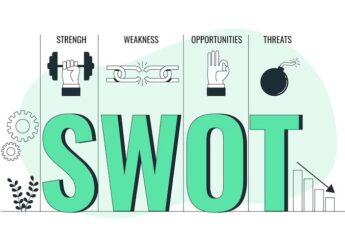5 Ways To Innovate Supply Chains Across Borders In 2024
by Ankita Tripathy Business Development Published on: 13 January 2024 Last Updated on: 22 June 2024

In today’s interconnected world, global supply chains are the lifeblood of successful businesses. Navigating their complexities demands a strategic blend of technology, collaboration, and foresight.
Going into the new year, entrepreneurs will need to find more ways to unleash the potential of cross-border supply chains.
This may include building a talented team of supply chain operators. SCM may also include digital technologies that take a traditional market into the 21st century.
How Franchises Control Supply Chains
Research shows that the biggest global franchises have the most lucrative supply chains. For instance, Zara is one of the globally reputed franchises. Zara’s supply chain is remarkable.
In 4 to 5 weeks, Zara can design a new product and launch the product range in the market. So, customers get new products every week.
At the same time, McDonalds, the world’s biggest global chain, has mastered their supply chain. As a result, all their franchises are performing up to the mark!
So, What Did They Do Good?
McDonald’s provided constant franchisee support, better quality control, and efficiently managed suppliers globally.
Whether producing microchips for electronics or materials for buildings, there are many ways to improve supply chains. We will take a deep dive into the best SCM strategies for franchises.
Here are five ways to innovate the supply chain across borders today:
1. Build a Talent Powerhouse

Dustin Burke, senior partner at Boston Consulting Group, and FourKites’ Tom Gregorchuk advocate for building talent powerhouses through workforce optimization when discussing the key industry and labor dynamics as they relate to a connected digital supply chain.
By implementing advanced data analysis and logistics capabilities, you’ll establish a “no-blame,” solutions-centric environment and encourage more open communication between teams, distributors, and your partners. Leverage real-time data to identify and address bottlenecks across operations.
After all, an agile and resilient workforce is empowered, accountable, and able to solve problems internally. Invest in training and development to foster more efficient workloads and supply chains over time.
How McDonald’s Build Their Talent Powerhouse?
Training is an integral part of the franchising strategy of Mcdonald’s too.
McDonalds provides self-directed training to supply chain partners for 20 hours each week. It helps all suppliers to align with the business purpose and objectives of McDonalds.
One of the base components of their training program is the improvement of speed and accuracy of performance.
How McDonalds target global suppliers?
They have a system of ongoing training at their Hamburger University. All franchisees can learn comprehensive management courses in 28 languages.
The franchisees also get special supply chain training. Above all, they learn how to coordinate with suppliers and streamline products and services from suppliers.
2. Master E-commerce and Drop-Shipping
Shared data transparency fuels sustainable practices. As such, look to collaborate with partners to optimize logistics, reduce waste, and minimize carbon footprints.
Additionally, strategically locate warehouses and automate deliveries from micro-fulfillment centers in key markets. You can also track deliveries to stay on top of the shipping process. Delivery times will improve with products readily available on standby.
Another example includes breaking down silos by implementing AI, robotics, and machine learning to further streamline processes; personalize customer experiences; and enhance security across the system — whether a physical delivery, a download, or live streams.
E-commerce Training For Franchisees
We see that franchisees are responsible for some of the best supply chain management strategies.
But you will be surprised to know that ecommerce training is a key part of SCM in franchisees also.
Experts say that all franchisors need specialized eCommerce tools. One of the integral parts of ecommerce training is ordering and fulfillment.
All franchises face issues with the same. Whether McDonalds, Kitchen Tune up or others, the issue remains the same.
Again, a B2B ecommerce solution is the best for ecommerce. B2B training projects on how franchises can do omnichannel SCM roles.
Since day 1, franchisees have focused on increasing sales and improving market presence. However, they must also handle multiple warehouses, multiple payment channels, and dynamic shipping options.
B2B ecommerce training includes all these prospects in detail.
3. Plan for the Unpredictable

Moving beyond traditional business forecasting, it’s now more important than ever to better predict and manage risks. Risk management should include using tools like virtual reality to predict and simulate daily disruptions and to engage in scenario planning.
Simulations like this allow teams to find gaps in their business models and prepare them against future disruptions. This way, teams learn to make better decisions faster and under pressure, while reducing the cost of operations and maximizing efficiency along the way.
To anticipate and mitigate disruptions like extreme weather, labor shortages, failing economies, and trade disputes, these tools can simulate worse-case scenarios and test supply chain resilience. More effective lines of communication will allow information to flow across teams and partners during times of chaos. Instead of grasping at strategies in the war room, execute strategies from behind your desk.
4. Embrace Digital Transformation, and Connect Across Functions
A strong proponent of digital transformation, Charu Thomas, CEO and founder of Ox, has made it her mission to make frontline workers more fulfilled and task-efficient when it comes to the supply chain and ultimately improve the bottom line.
End-to-end data transparency, for example, is key to successful supply chain operations. In that vein, look to implement a fully integrated digital supply chain for heightened control and fruitful real-time visibility. Leverage augmented reality, smart wearables, and efficient dashboards to empower frontline workers. Not only will tasks become easier — but the data is fuel for innovation.
Role Of Digital Transformation Training To Franchisees
To improve the efficiency of the supply chain, digital transformation training is invincible.
Research shows that 7-11 uses the best digital training for improving the supply chain.
It is a franchisee business, based out of the US. The brand is witnessing rapid global growth. However, what is special about their digital training approach?
We know that it requires great skills to manage the supply pipeline in a complex business like FMG retail. So, 7-11 provides digital kiosk handling training to all franchisee staff. Therefore, they can increase the speed of dealing with vendors and suppliers in real-time.
At the same time, 7-11 provides mobile payment training. They also train franchisees to customize orders and align market demand with supply management.
AI tools can do that for the franchisees. 7-11 provides separate training on these tools to all franchisees.
Role Of Digital Transformation Training To Franchisees
To improve the efficiency of the supply chain, digital transformation training is invincible.
Research shows that 7-11 uses the best digital training for improving the supply chain.
It is a franchisee business, based out of the US. The brand is witnessing rapid global growth. However, what is special about their digital training approach?
We know that it requires great skills to manage the supply pipeline in a complex business like FMG retail. So, 7-11 provides digital kiosk handling training to all franchisee staff. Therefore, they can increase the speed of dealing with vendors and suppliers in real time.
At the same time, 7-11 provides mobile payment training. They also train franchisees to customize orders and align market demand with supply management.
AI tools can do that for the franchisees. 7-11 provides separate training on these tools to all franchisees.
5. Forge Strategic International Partnerships

Leaders like Dominic Ng, Chairman and CEO of East West Bank, understand the importance of forging strong and strategic global relationships. Indeed their expertise in navigating diverse international markets translates into financial solutions that help customers innovate supply chains and deliver products faster and more efficiently.
Unlock untapped resources, product capabilities, and new markets by partnering across borders. Together, you’ll reduce the costs and risks involved in creating and marketing the products customers love.
You’ll also want to create a synergy complementary to your partner while identifying gaps in existing markets and those opportunities yet to be capitalized upon. Additionally, be mindful of cultural differences and barriers between languages, especially when it comes to brand messaging across borders. Finally, foster open communication, and ask your partners for their feedback.
Both respect and transparency are the cornerstones of successful collaboration. Allow it to build bridges across borders to eliminate barriers of entry between markets. And leverage existing trade agreements and industry networks to navigate regulatory complexities by establishing trust between your international partners.
Final Thoughts
By embracing these strategies, businesses can transform their international supply chains into a competitive advantage, unlocking new markets, reducing costs, and delivering exceptional customer experiences. Manufacturers can work with their suppliers to understand whether a shipment has been picked up, is in transit, and will arrive on time.
In today’s dynamic global landscape, those who adopt a strategic approach to innovation will be the true pioneers of cross-border success. Using a downstream customer service type approach, businesses will become more fluid and supply chains will become smarter.
Read Also:







































































































